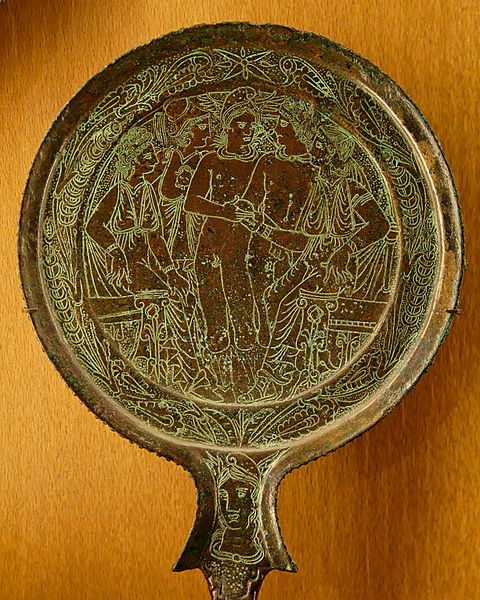The Golden Bough: A Study in Comparative Religion is a wide-ranging, comparative study of mythology and religion, written by the Scottish anthropologist Sir James George Frazer. The Golden Bough was first published in two volumes in 1890; in three volumes in 1900; and in twelve volumes in the third edition, published 1906–1915. It has also been published in several different one-volume abridgments. The work was for a wide literate audience raised on tales as told in such publications as Thomas Bulfinch's The Age of Fable, or Stories of Gods and Heroes (1855). The influence of The Golden Bough on contemporary European literature and thought was substantial.
Cover of the first volume of the 1976 Macmillan Press edition
J. M. W. Turner's 1834 painting of the Golden Bough incident in the Aeneid
The Judgement of Paris—an Etruscan bronze-handled mirror of the fourth or third century BC that relates the myth as interpreted by Frazer, showing the three goddesses giving their apple or pomegranate to the new king, who must kill the old king
Myth is a genre of folklore or theology consisting primarily of narratives that play a fundamental role in a society, such as foundational tales or origin myths. For scholars, this is very different from the vernacular usage of the term "myth" that simply refers to something that is not true. Instead, the truth value of a myth is not a defining criterion.
Odysseus Overcome by Demodocus' Song, by Francesco Hayez, 1813–1815
Ballads of bravery (1877) part of Arthurian mythology
Opening lines of one of the Mabinogi myths from the Red Book of Hergest (written pre-13c, incorporating pre-Roman myths of Celtic gods): Gereint vab Erbin. Arthur a deuodes dala llys yg Caerllion ar Wysc... (Geraint the son of Erbin. Arthur was accustomed to hold his Court at Caerlleon upon Usk...)
Myths and legends of Babylonia and Assyria (1916)







